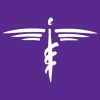According to the Organ Procurement and Transplantation Network, more than 103,000 adults and children in the United States are on the national transplant waiting list, and another person is added to the list every eight minutes.
Each day, 17 people die waiting for an organ transplant. While 95% of Americans are in favor of organ donation, only 58% are registered.
As a medical technologist in a North Carolina Baptist Hospital lab in the mid-1980s, Gordon Bowen, M.H.A.’90, began a 38-year career in organ and tissue donation after a chance conversation over lunch with staff from an organ recovery agency. Over the years, he has seen remarkable changes in transplantation and played a role in the nation’s first near-total face transplant.
Bowen, who will retire this year after 19 years as CEO of Lifebanc, a nonprofit organ, eye and tissue recovery organization, emphasizes the mission remains the same: saving lives.
“I tell every new employee here — we all directly and indirectly get to save a life every day. And there’s no better mission than that,” Bowen says.
The Daily Work of Saving Lives
Bowen has regularly faced the emotional challenge of gaining consent from grieving families for organ donation. “You’re meeting people during the worst possible time of their lives,” Bowen says.
He coordinated the recovery, preservation and delivery of organs or tissues, using payphones in the pre-cell phone era.
“Back in the 1980s and 1990s, I would be given a roll of quarters to use at payphones to receive an organ offer and set up transportation to the transplant center,” he says. “I was on call 24/7 and 365 days a year.”
In 1988, Bowen joined Iowa Methodist Medical Center’s new kidney transplant program in Iowa. It allowed him to meet living donors, connect with recipients and those waiting.
“It’s beautiful to see that full circle — the kidneys recovered from our local donors went into patients that I got to see a few days later within the same hospital,” he says.
While working in Des Moines, Bowen earned his Master of Health Care Administration degree from Des Moines University Medicine and Health Sciences, a feat he achieved despite a demanding job and family responsibilities.
“Without that degree and a very supportive wife, I probably would not be where I am today,” he says.

In 1991, Bowen advanced to administrative positions within the United Network for Organ Sharing in Virginia and later to Lifeline Ohio in Columbus, where he directed procurement services.
The importance of his and his colleagues’ work has always compelled him. Bowen recalls the day he was coaching his 8-year-old son’s soccer team, and he was called in to help recover a heart from another 8-year-old boy who’d died after an asthma attack on a different soccer field that same day.
“I just watched my son win a soccer game, and then I see this poor little boy waiting to be a hero to perfect strangers through his gift of donation,” he says. “It just makes you appreciate life and that you’re able to be living it. To help someone get the chance to live an extra day is why I do what I do.”
Bowen emphasizes the extensive teamwork required in organ and tissue transplantation among Lifebanc’s nearly 200-person staff.
“I say that I feel like I’m the conductor of an orchestra, but the staff are the ones who create that beautiful music,” he says.
An organ donor can save eight lives. A tissue donor can enhance the lives of 75 to 100 people.
Equally crucial are the hospitals, transplant centers, coroners, funeral homes and even bureaus of motor vehicles that ask people if they want an organ donor designation on their driver’s licenses. “It’s a miracle that donation and transplantation happen with all the pieces that have to come together,” he says.
The most important piece of the process is the donor and the donor’s family.
“We follow up with our donor families for up to two years, and we were one of the first organ recovery agencies in the country to offer licensed counseling for our families,” Bowen says. “Trust is probably the number-one attribute we can have in this industry.”
Making History by Rebuilding a Face — And a Life
One of the most memorable cases for Bowen was the face transplant of Connie Culp, who was shot in the face by her husband, Thomas Culp, in a failed murder-suicide inside their bar in Hopedale, Ohio, in 2004. After the incident, the Ohio mother of two was left partially blind, unable to smell and speak, and she had to rely on a surgical opening in her neck to breathe.
Four years later, Lifebanc collaborated with Maria Siemionow, M.D., at the Cleveland Clinic to perform a near-total face transplant procedure on Culp.
“This involved meticulous planning and work by Lifebanc in areas such as due diligence, the donation consent procedure, recovery logistics and donor privacy,” Bowen and two Lifebanc colleagues wrote in a chapter they contributed to the 2011 book The Know-How of Face Transplantation. Such a transplant “had never been done before, and at the time, it seemed controversial,” Bowen wrote in the chapter.
In December 2008, Lifebanc identified a potential facial composite donor, a woman listed on the Ohio Donor Registry who had consented to organ and tissue donation and research. Her family gave Lifebanc consent to donate the woman’s organs and learn more about face transplantation, to which they eventually agreed. The 22-hour operation replaced 80% of Culp’s face.
Culp became an organ donation advocate and made public service announcements for Lifebanc. Bowen adds that she inspired providers like him and his team.
“There are a lot of great things we’ve done over the years, but we just can’t sit on our laurels,” Bowen reflects. “We’ve got to continue to push the envelope. Until all Americans are registered on the donor registry and the waitlist is eliminated, our job is not done.”
